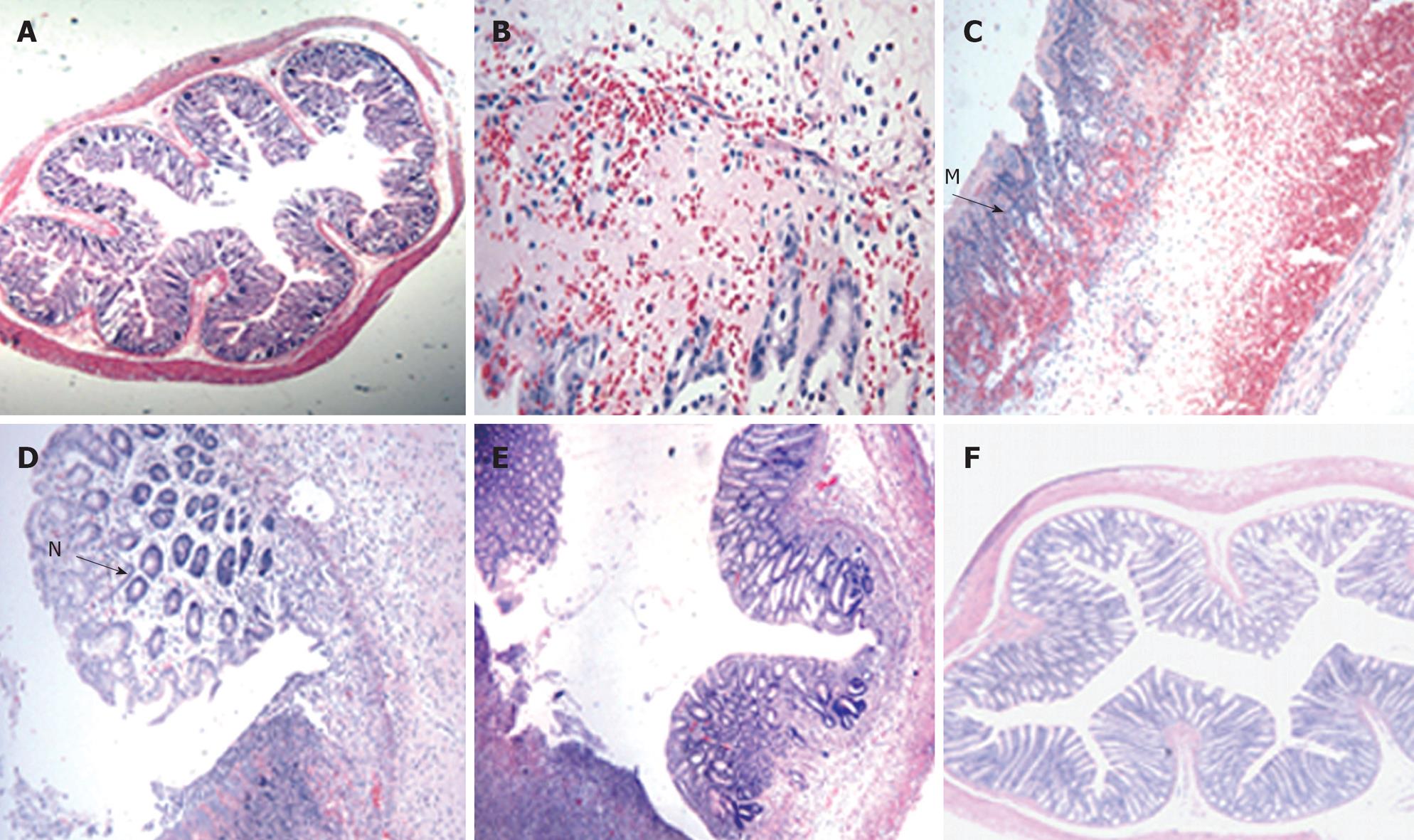Copyright
©2010 Baishideng.
World J Gastroenterol. May 14, 2010; 16(18): 2252-2259
Published online May 14, 2010. doi: 10.3748/wjg.v16.i18.2252
Published online May 14, 2010. doi: 10.3748/wjg.v16.i18.2252
Figure 3 Light photomicrograph of colon tissues from TNBS-induced colitis rats.
In control rats, normal histological colon morphology is evident (A, × 4). At day 3, oedema and haemorrhage at the mucosa with goblet cell depletion were seen (B, × 20). At day 7, severe transmural infiltration of the colon wall developed, with submucosal oedema and haemorrhage, lymphocytic and neutrophilic infiltration (M) and coagulative necrosis (C, × 10). At day 14, goblet cell regeneration (N), oedema and haemorrhage regressed by degrees (D, × 20). At day 21, abundant goblet cells and crypts developed (E, × 10). At day 28, oedema and haemorrhage had almost entirely disappeared, the structure of the muscular layer became compact and the intestinal glands developed highly (F, × 4).
- Citation: Wang K, Yuan CP, Wang W, Yang ZQ, Cui W, Mu LZ, Yue ZP, Yin XL, Hu ZM, Liu JX. Expression of interleukin 6 in brain and colon of rats with TNBS-induced colitis. World J Gastroenterol 2010; 16(18): 2252-2259
- URL: https://www.wjgnet.com/1007-9327/full/v16/i18/2252.htm
- DOI: https://dx.doi.org/10.3748/wjg.v16.i18.2252









